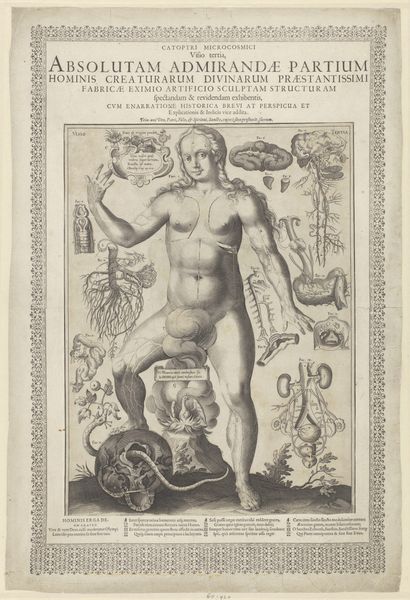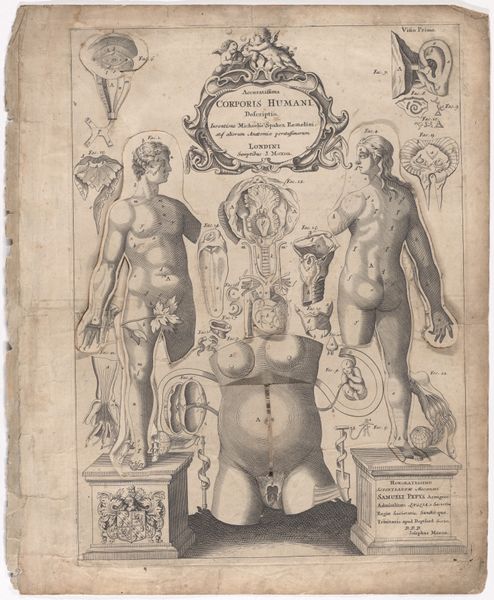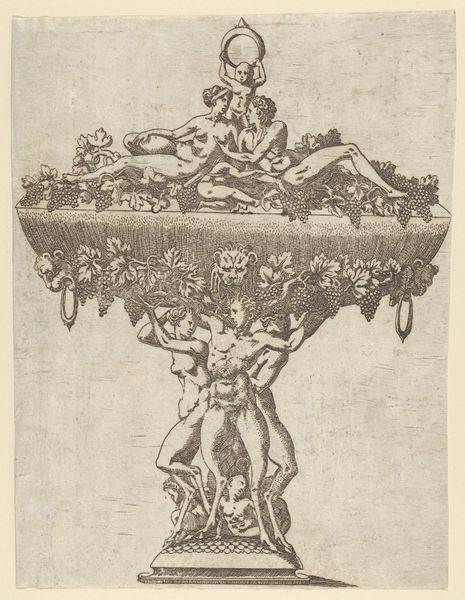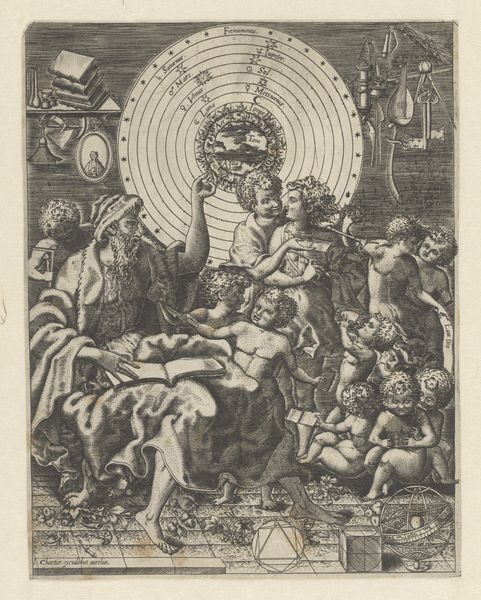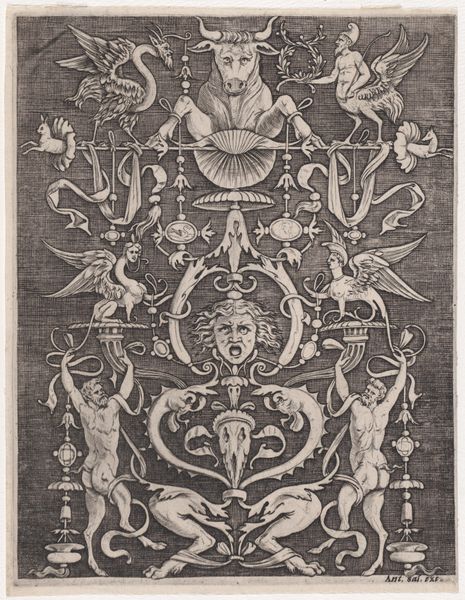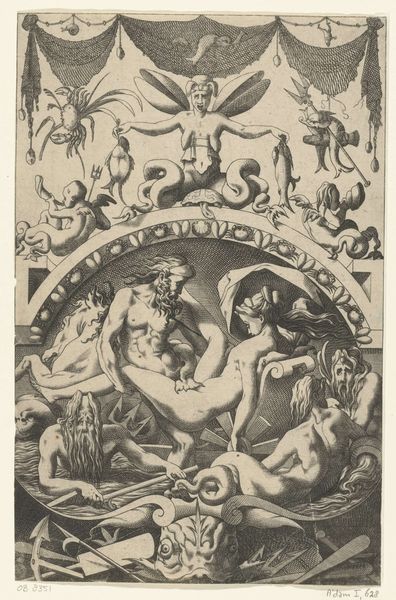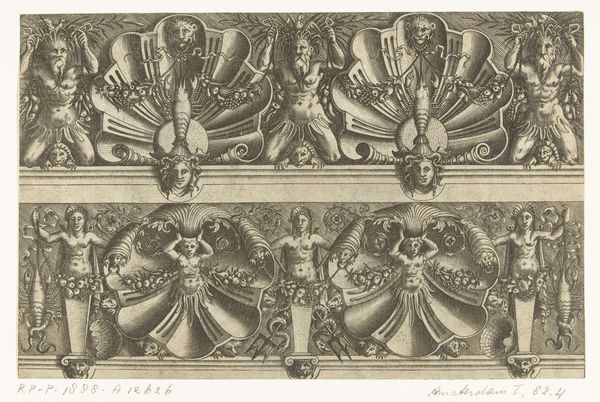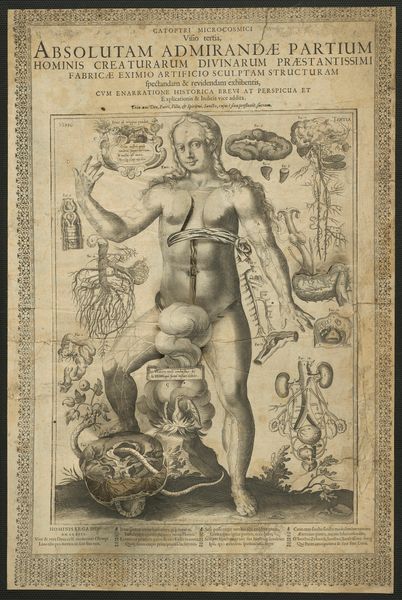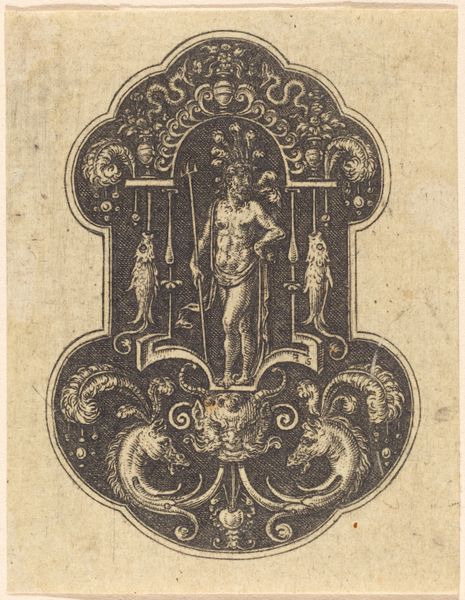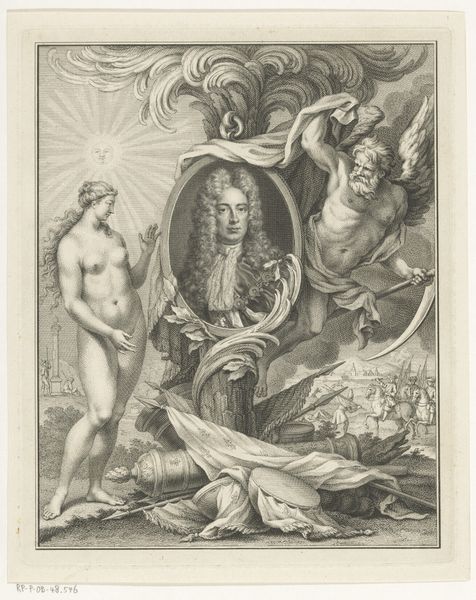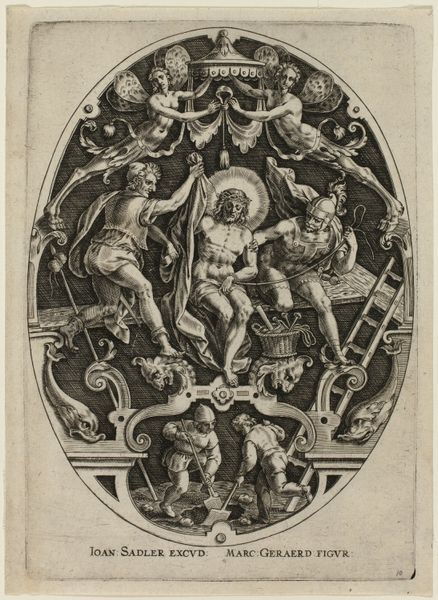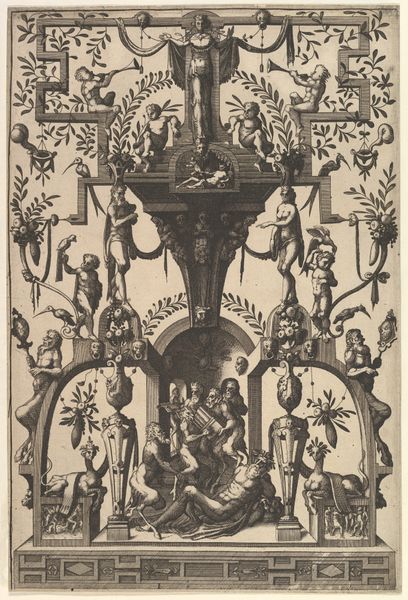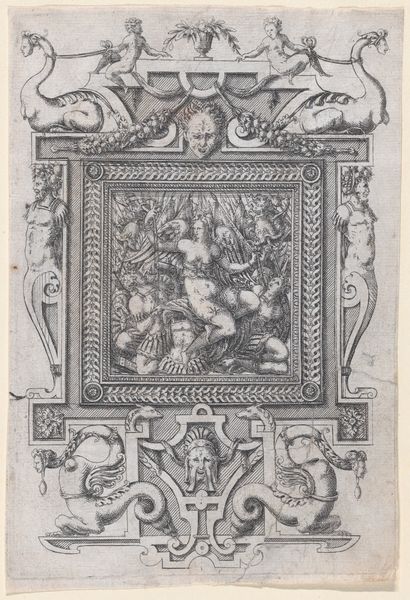
Anatomie en fysiologie van het menselijk lichaam met details van het oog, oor en de buikholte bij zwangerschap 1613
0:00
0:00
drawing, print, ink, engraving
#
portrait
#
drawing
#
baroque
# print
#
figuration
#
ink
#
history-painting
#
academic-art
#
engraving
Dimensions: height 365 mm, width 266 mm, height 533 mm, height 358 mm
Copyright: Rijks Museum: Open Domain
Curator: This print, titled "Anatomie en fysiologie van het menselijk lichaam..." by Lucas Kilian, dating from 1613, really catches the eye, doesn't it? There's so much detail in the human figures. What's your initial impression? Editor: It’s incredibly intricate. There’s so much text combined with the anatomical renderings. I'm struck by how it seems to bridge art and science, yet the depiction feels almost…mechanical, more about systems than living beings. How do you see this work through a different lens? Curator: Consider the material conditions that shaped its creation. Kilian was working in a printmaking tradition deeply reliant on skilled labor and access to specialized materials like inks and engraving tools. Think about who was consuming these images and for what purpose. This print serves less as a straightforward anatomical guide and more as a demonstration of human ingenuity. Note that its Latin inscription uses terminology such as FABRICA and ARTIFICIO referring to the divine sculptural "work" of human anatomy. Editor: So, you’re suggesting the *making* of the image is as important as the anatomy it depicts? Curator: Exactly. The act of engraving these complex systems and organs elevates the craft of the printmaker and, by extension, mirrors what was perceived to be a similar craft used by god to sculpt perfect anatomy. This contrasts with earlier depictions that might emphasize the divine soul rather than physical manifestation. Consider how the artist would need access to both cadavers and intellectual communities, the access to which created social power. Editor: That's fascinating! Thinking about it as a production, not just a representation. The social aspects of science... Curator: Precisely. What initially seems to be a straightforward diagram becomes a testament to both the observed material body and the labor required to understand and represent it. Reflecting upon its creation forces us to analyze labor, skill and access that underpinned both artistic and scientific exploration during that period. Editor: It’s amazing how considering materials and labor changes the entire meaning of this image. I'll never see scientific illustration in the same way.
Comments
No comments
Be the first to comment and join the conversation on the ultimate creative platform.
